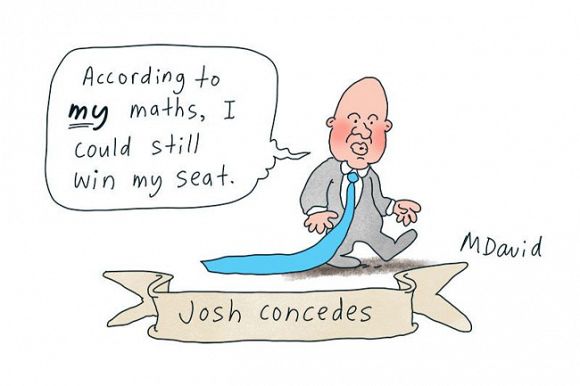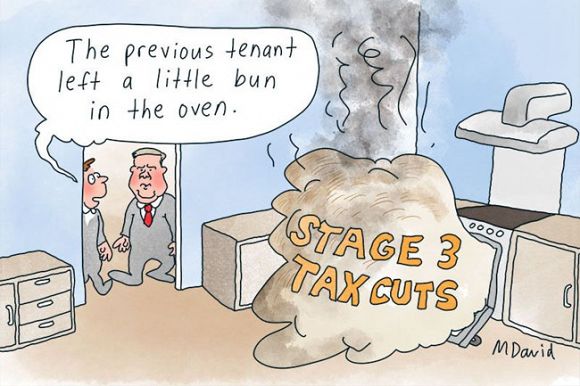
The Coalition Government’s last year in office saw wealth shift further from the poor to the rich, as Alan Austin reports.
THE WHOLE WORLD became richer through 2021 as the recovery from the COVID recession gathered pace. Australians participated in this substantial enhancement of personal wealth, but with the top end benefiting much more than the lower and middle sectors of the population.
The thirteenth annual edition of the Credit Suisse Global Wealth Report has just been published, along with its comprehensive Global Wealth Databook. Produced by the research division of the prestigious Swiss finance corporation, these explain wealth distribution within and between more than 200 countries.
By the end of last year, global wealth totalled U.S.$463.6 trillion (AU$710.9 trillion), an impressive gain of 9.8% over the previous year. Wealth per adult rose 8.4% to U.S.$87,489 (AU$134,180). Setting aside exchange rate movements, aggregate global wealth grew by 12.7% in 2021, the strongest annual rate ever recorded. Impressive.
This data relates to 2021, so does not reflect the impact of the recent global surge in inflation, nor of the Russia-Ukraine war which started in February. Australia’s outcomes are attributable entirely to the policies of the former Coalition Government, which lost office in May this year and whose legacy of economic management is likely to continue for most of 2022.
The latest official data on Australia’s economy reveals serious structural problems making all workers poorer.
Australia’s median wealth this year was recorded at U.S.$273,903 (AU$420,155), which ranked third in the world behind Iceland with U.S.$375,735 (AU$585,600) and Luxembourg’s U.S.$350,271 (AU$545,913). That’s up from U.S.$245,454 (AU$376,570) in Australia last year, which ranked fourth in the world behind Belgium, Iceland and Luxembourg.
Median wealth is the measure preferred by economists over mean wealth per adult as it better reflects the distribution of wealth across the community.
Since the Global Financial Crisis in 2008, Australia has continually been in the top four on this global ranking, holding the top spot from 2011 to 2014.
Australia’s mean wealth ranked fifth in the world at U.S.$550,110 (AU$844,032) in 2021, behind Hong Kong, Luxembourg, Switzerland and the USA [Global Wealth Databook, table 2-2].
Australians should not be unduly smug about the strong growth in wealth, however. It does not reflect worker productivity or management enterprise or government policy. It is due primarily to the increase in real estate values relative to the rest of the world.
The Wealth Databook shows Australia’s currency depreciated against the U.S. dollar by 5.8%, compared with a 9.9% appreciation in 2020. Stock exchange shares increased in value by a modest 12.4%, compared with a dismal decline of 0.8% the year before. House prices in 2021 increased by a whopping 30.7% compared with just 3.6% in 2020 [table 1-4].
The final report on the Morrison Government’s economic management was a damning indictment of failure.
The concern once again is that the top wealth brackets are continuing to increase their share of the national pie even further, a trend which became evident soon after the Coalition replaced the previous Labor Government in 2013.
As shown in the chart below, the share of the nation’s wealth held by the bottom 90% of the population has tumbled from 55.1% in 2012 to just 47.7% last year. The richest 10% of the population have gained commensurately, with the top 1% benefiting most of all.
This score out of 100 is a neat measure of the fairness of the distribution of wealth in any nation. A coefficient of zero expresses perfect equality, where everyone has exactly the same wealth. A score of 100 would reflect maximum inequality across the community. Thus, the lower the better, if we consider equality desirable.
In 2021, the countries with the best equality – that is, the lowest Gini scores – included Japan, Belgium, Malta, Iceland, East Timor and Qatar — all below 64.8 [Global Wealth Databook, table 3-1].
Nations with the worst inequality – with scores above 88.0 – included Brazil, Russia, Sweden, Brunei, Laos and South Africa.
Australia’s 2021 Gini coefficient was 66.2, up from 65.6 the year before. Although this is towards the lower end of the global table, this continues a trend towards worsening inequality from 2014 onwards when the score was just 64.0. It rose to 65.2 in 2017 and 65.8 in 2018. The current score is the highest since 2010.
Among proposals for tax reform considered by the Albanese Government, lifting the corporate tax rate should be included.
Credit Suisse noted that as in most other high-income countries, disposable income in Australia rose in 2020 by 4.8% due to pandemic relief payments. Private consumption, on the other hand, fell by 6.7%. Combined, these trends led to a jump in the household saving rate which had a positive effect on financial assets and also led to some repayment of debt.
In 2021, there was a return to a more normal situation, with disposable income rising only 1.6% and consumption increasing 5.1% — almost enough to reverse the 2020 drop.
Again, as seen in other countries, the rise in private saving in 2020 contrasted with a rise in public debt. Australia’s public debt rose from 46.8% of GDP in 2019 to 57.8% in 2020. There was a further small rise to 59.8% in 2021.
Credit Suisse believes many countries face slower growth or even recession in the next two years, but things should improve thereafter. The uncertainties include the war in Ukraine, global inflation, mid-term elections in the USA, national elections elsewhere and recurrent climate disasters.
In Australia, a fresh budget from the incoming Albanese Government will be handed down later this month. The next twelve months will be intriguing to observe.
Alan Austin is an Independent Australia columnist and freelance journalist. You can follow him on Twitter @alanaustin001.
Support independent journalism Subscribe to IA.
Join the IA newsletter for regular updates on our latest news stories.
SIGN UP
Advertise on IA
We need YOU!
IA punches above its weight.
Help us sharpen our knuckledusters.
PLEASE DONATE NOW!
Donate Now
Independent Australia is a progressive journal focusing on politics, democracy, the environment, Australian history and Australian identity. It contains news and opinion from Australia and around the world. [ Learn more ]
Subscribe Donate
Subscribe to IA and investigate Australia today.
Close Subscribe Donate










